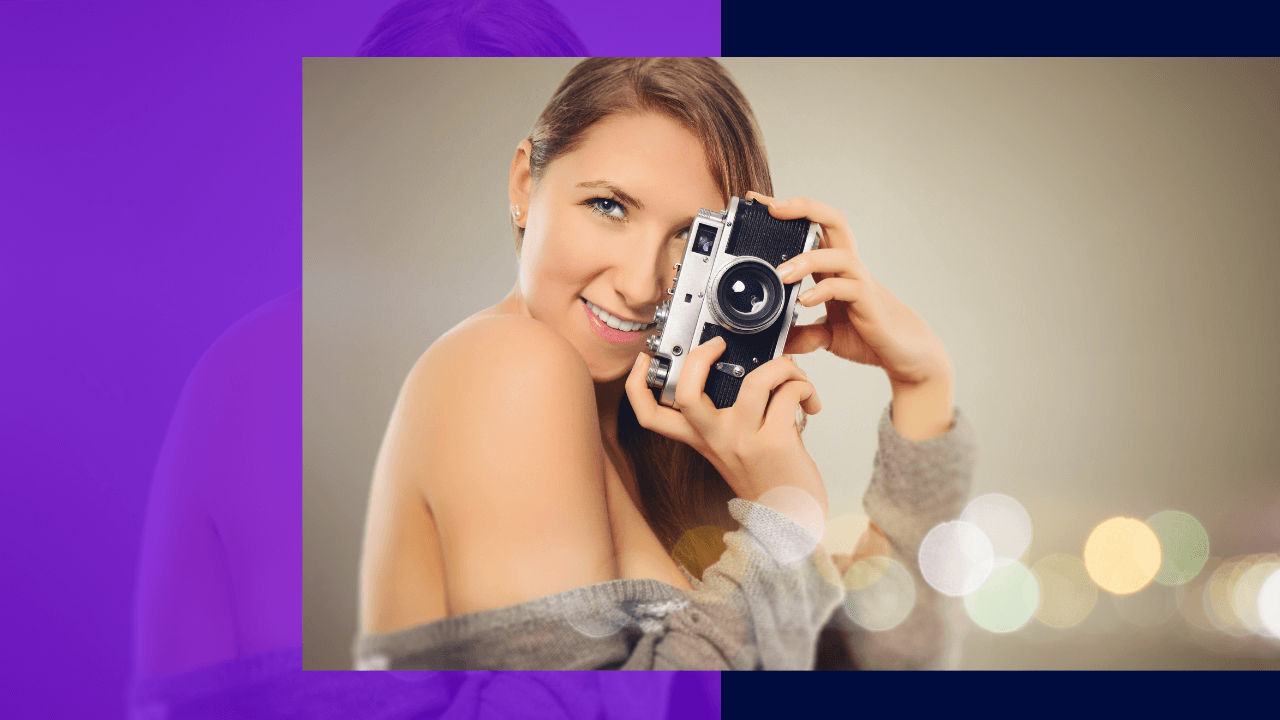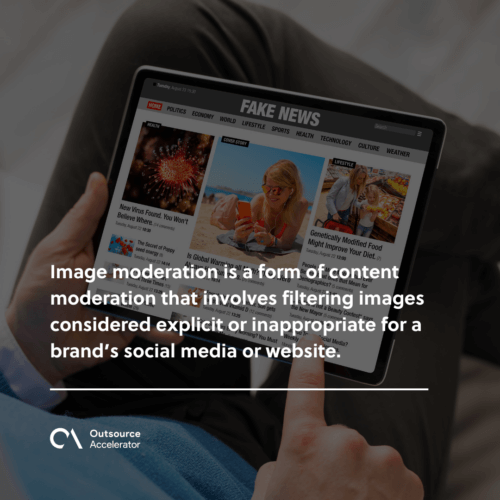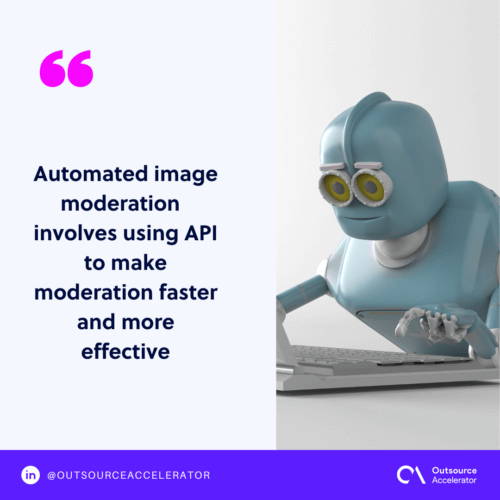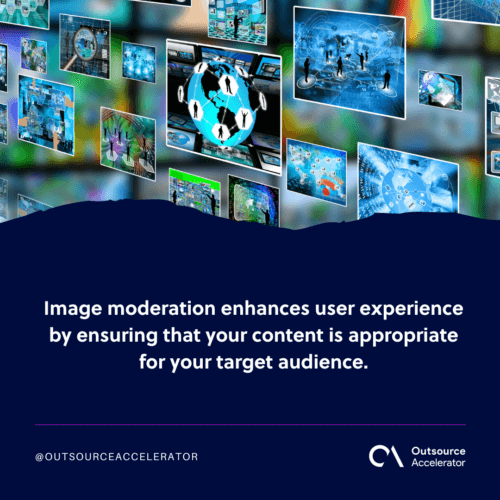A quick guide on image moderation

Building a brand reputation requires you to carefully manage every aspect of your business, including your visual identity.
Images create an impact on your company. It serves as a visual representation of your brand, products, and services. This is why you should leave no room for inappropriate images on your website and social media pages to maintain your reputation.
Image moderation is a good practice to ensure the safety and welfare of your customers every time they will access your website. This article briefly explains image moderation and how it affects your operation.
Image moderation defined
Image moderation is a form of content moderation that involves filtering images considered explicit or inappropriate for a brand’s social media or website.
Organizations have different standards for filtering images depending on their guidelines. Wattpad, for instance, imposes a zero-tolerance policy on images that violate their community standards on content.
Brands can either use automation or hire dedicated experts to approve or flag inappropriate images as much as possible.
When does image moderation become necessary?
As a business, you should always practice image moderation to ensure your customers’ safety and optimal experience.
While it is most recommended for companies of all industries, image moderation becomes a requirement for your company with the following conditions.
- When you post family-oriented content
- Your brand lives off of user-generated content (UGC)
- When you receive numerous complaints and reports of violations in a day
- You hold contests and other activities that require user content
- You have established a reputable brand and want to maintain your credibility in the long run

Types of image moderation
You can use several types of image moderation to filter your images more efficiently:
Manual moderation
Manual moderation involves using human content moderators to filter images and other visual content. It is an excellent alternative to AI since not every image can be filtered properly through the system.
This requires attention to detail and determination for moderators. Some content could require conscious decision-making, especially when dealing with images that are too graphic or obscene.
This type is ideal for small businesses dealing with a small volume of images to be moderated and verified daily.
Automated moderation
Automated moderation involves using API to make moderation faster and more effective.
With the help of coding and machine learning, teams can instantly employ automated moderation to review huge volumes of images. They can also integrate default websites and software abundant in the market to help with their efforts.
AI moderation also has its shortcomings. It lacks conscious monitoring of images; the system only detects what is programmed into them.
As a result, the system could flag images that pass the company guidelines and qualify the obscene ones.

Hybrid moderation
Lastly, hybrid moderation combines manual and automated moderation in one operation.
To maximize the effectiveness of the operations, companies can initially use AI to process large volumes of images. Human moderators will then qualify and validate what the AI has filtered.
Hybrid moderation is seen as a more viable option for moderating content, especially images, to make up for the shortcomings of AI moderation.
One way to do this is through conditional delegation,[1] where human moderators set the guidelines used by AI to qualify images.
How image moderation affects your brand
Brand protection is more challenging than it seems. Going beyond filtering content, you have to minimize getting explicit content in the future.
As much as brand image creates impression and recognition, image moderation helps strengthen your reputation. It sends a message that you care for your customer’s welfare and safety when visiting your website or page.
Further, image moderation helps your brand improve the following.
- User experience. Image moderation enhances user experience by ensuring that your content is appropriate for your target audience.
- Customer satisfaction. At the same time, moderating images increases customer satisfaction since fewer customers will report your content as inappropriate.
- Search engine rankings. Image moderation prevents your site from getting flagged for inappropriate content. It can even boost your search engine rankings and get your website seen by a wider audience.
- Compliance with industry regulations. Lastly, you can guarantee compliance with the regulations according to your industry through image moderation. This results in increased authority and knowledge to impart on your website.

Outsourcing image moderation
In the end, you cannot always handle your moderation processes in-house. This operation can take time, depending on the volume of images you process and your procedures in filtering.
Outsourcing image moderation can be a great way to ensure that your content is safe and appropriate for your audience. Image moderation through OP360 is a service that utilizes advanced technology and human moderation to ensure the appropriate and safe use of images in various online platforms.
As the demand for image moderation continues to grow, it is important to research the best provider for your needs.
Having the right provider assures you that your images are moderated quickly and accurately and that your content complies with industry standards.
Article reference:







 Independent
Independent




